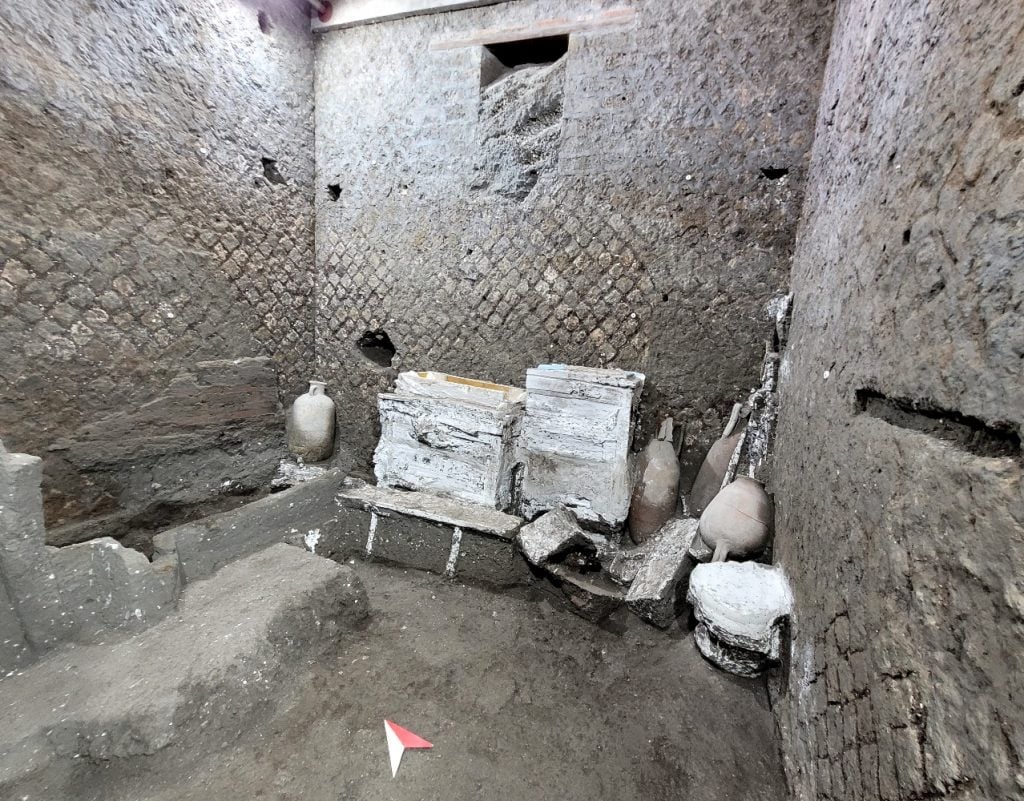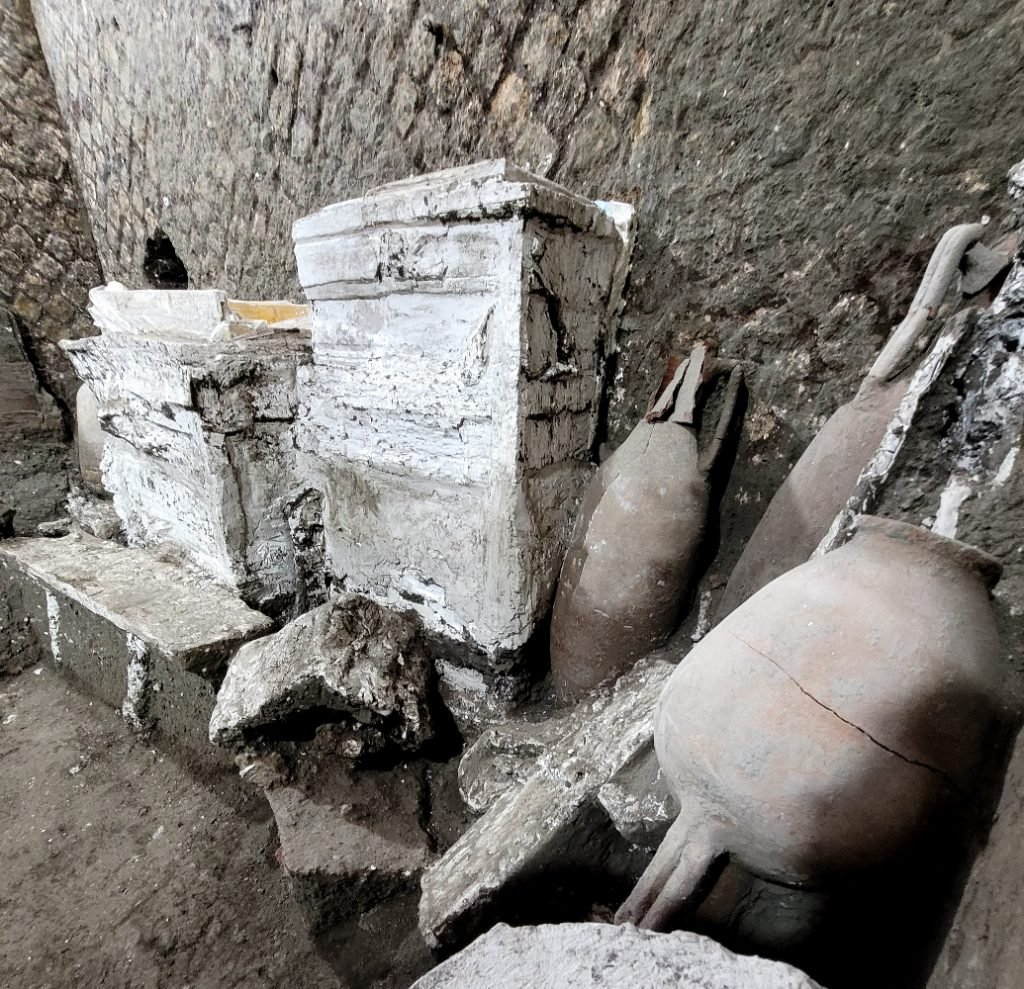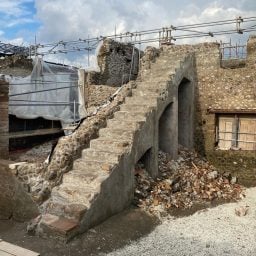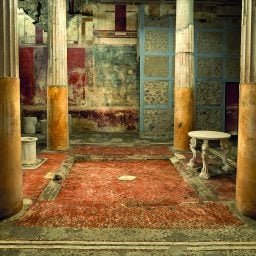Many of the ancient Roman emperors and other elites are well known, but there is relatively little information about its sprawling underclass. Ongoing excavations at Civita Giuliana, one of main villas in the countryside surrounding the ancient city of Pompeii, have unearthed significant new discoveries including ancient cookware and a ceremonial chariot—and now, the latest find is a servants’ quarters area, offering unique insight into the lives of enslaved people in antiquity.
In 2021, three rooms were brought to light for the first time. Most of the ancient furniture has been reconstructed and smaller items have been recovered, giving researchers an unprecedented glimpse at how these spaces would have looked just before Vesuvius erupted in 79 C.E.
When this happened, the contents of the rooms were enveloped in a blanket of hot ash that rose about three feet from the ground, eventually solidifying into pyroclastic rock and freezing the objects in time. While the organic matter has since disintegrated, researchers were able to make plaster casts of these items using the voids left behind in the pyroclastic layer.

Bed of enslaved people at Civita Giuliana. Photo courtesy of Archaeological Park of Pompeii.
One room contained three makeshift beds, constructed by assembling a frame that used to hang a net in a style similar to a hammock. On the day of the eruption, blankets had been left in a disheveled heap on top. Beneath the beds, the inhabitants stashed personal belongings and an assortment of ceramic vessels, including a night pot. A zooarchaeological analysis of some of these containers showed that they had housed two mice and a rat, identified by their remains.
A range of furniture filled another room, including a bed underneath a large L-shaped shelf, from which three wicker baskets were toppled by the surge of ash, a bench, and two small cupboards, one of which contained metal tools like a knife and scythe. Another shelf lining the room held crockery and cutlery. Evidence of a more luxurious bed with a mattress has also been found.
The researchers noted in their report that there was no evidence the slaves were locked into their rooms. Instead, they speculated that the more comfortable bed may have belonged to a servant of elevated status who was trusted to oversee his fellow inhabitants and prevent their escape.
“Such slaves often would be granted privileges in order to make them reliable allies of the master, e.g., by allowing them to live with a female slave in a de-facto marriage,” the researchers wrote.

Two cupboards and a bench inside room inhabited by enslaved people at Civita Giuliana. Photo courtesy of Archaeological Park of Pompeii.
While runaways were harshly punished, a long period of loyalty to one’s master was sometimes rewarded with liberation. Allowing slaves to form families might also have been a way to encourage them to be more accepting of their circumstances.
“To get the whole picture, we should add an atmosphere of suspicion to the image of simplicity and intimacy offered by the rooms in the slave quarters of the villa,” the report concluded. “There certainly was solidarity, maybe even friendship and love (bonds which often lasted after a slave was set free), but there must have also been fear and terror of being accused before the master by a fellow slave.”
Civita Giuliana has a long history of being targeted by looters, who have damaged parts of the structure and stolen many items of significance. The official exploration of the site began in 2017, and has been supported by a partnership between the Archaeological Park of Pompeii and local law enforcement to protect the villa from any further illegal activity.
More Trending Stories:
An 1837 Portrait of an Enslaved Child, Obscured by Overpainting for a Century, Has Been Restored and Acquired by the Met
Rising Artist Ronan Day-Lewis’s ‘Punk Romanticism’ Imbues Desolate American Landscapes With an Eerie, Cinematic Aura
Why Did Yoko Ono’s Arboretum Art Installation in New York Shut Down Early? ‘Unfortunately, Trees Died’
LGDR Gallery Splits Up After Less than Two Years as Founding Partner Jeanne Greenberg Rohatyn Departs
Photographers Recreate Old Master Paintings in Witty and Profound Ways in a New Show at a Princeton University Art Gallery
Blue-Chip Artworks Seized From Top Portuguese Collector Will Be Featured in New Art Museum in Lisbon
Once Celebrated and Then Forgotten, the French Artist Marie Laurencin Is About to Step Into the Limelight Again, Three Decades After Her Death











